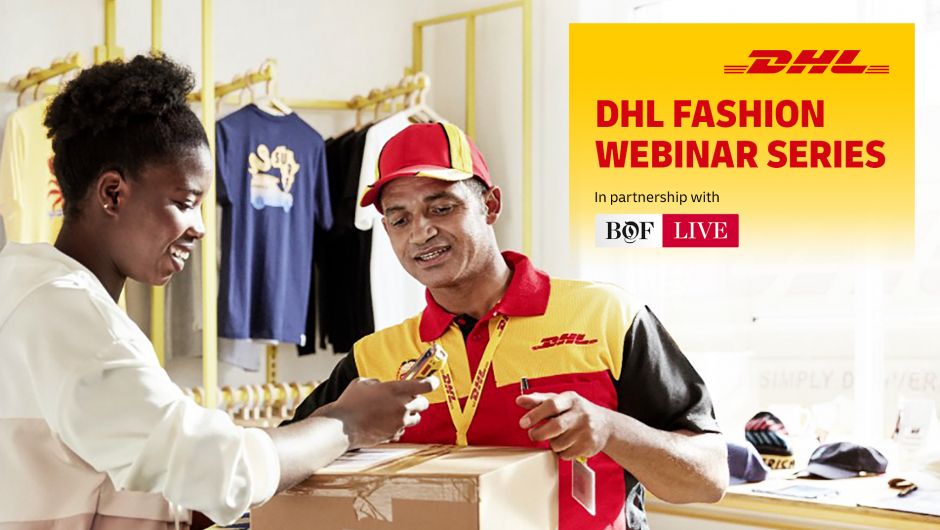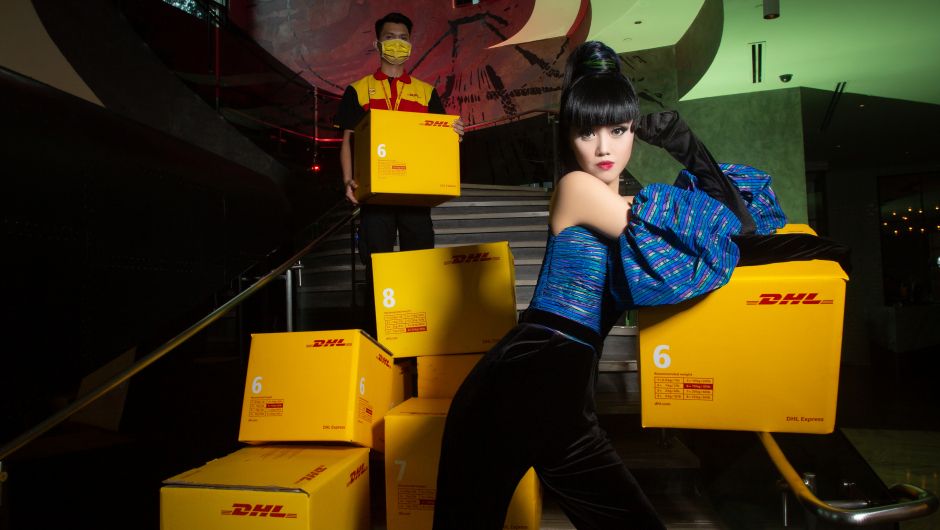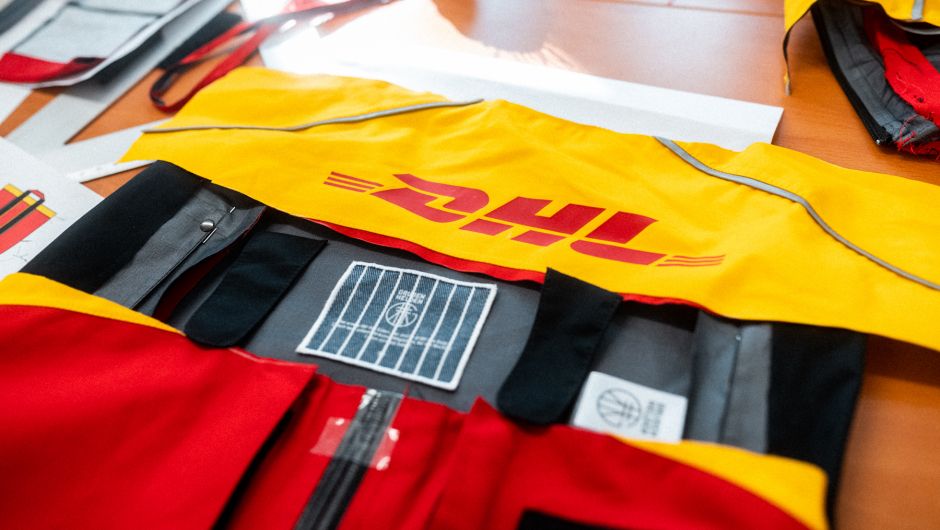Fashion
A Roadmap To Fashion’s Carbon-free Future
As e-commerce continues to boom, and logistics becomes increasingly complex, how can the fashion industry cope with its accumulating logistical activities? Can the fashion industry pave the way to becoming carbon-free and simultaneously effect positive change across other industries? These were some of the questions posed during DHL's latest webinar, hosted by leading fashion news and business intelligence platform The Business of Fashion (BoF). As part of DHL's ongoing partnership with the BoF, the webinar discussed the potential roadmap to a carbon-free future within the fashion industry, and the steps retailers can take to begin working towards reducing their emissions.
The discussion was hosted by Robin Mellery-Pratt, Director of Content Strategy at the BoF. He was joined by Katja Busch, Chief Commercial Officer and Head of CSI at DHL,and Morten Lehmann, Chief Sustainability Officer of the Global Fashion Agenda (GFA). As the leading forum for industry collaboration on sustainability in fashion, GFA’s publications offer scientific research on the social and environmental impact of the fashion industry, as well as guidance for fashion brands and retailers on reducing their environmental impact. During the 45-minute online discussion, the expert panel touched up on several key points, such as the current impact of the fashion industry, the importance of data collection, sustainable alternatives for transportation, packaging and materials. They also gave feasible tips for retailers and brands to take on board to reduce their carbon footprint.
Watch the highlights of the webinar here:
The impact of the Fashion Industry
Throughout the discussion, Mellery-Pratt, Lehmann and Busch all stressed the industry’s need to start acting on climate change now. If the fashion industry continues growing on its current trajectory, it will miss its 2030 emission reduction targets by 50%, causing accelerated global warming. Global fashion production currently generates 4% of the global greenhouse gas emission (GHG), and puts severe demands on the planet’s water and resource reserves, according to research from the GFA and McKinsey & Company. To turn raw resources like cotton into textiles, large amounts of chemicals and energy are needed. At the same time, the production of synthetic materials like polyester causes remarkably high levels of carbon emissions.
As the largest logistics company in the world and a partner to the fashion industry for several decades, DHL is acutely aware of the role it holds in bringing around sustainable change. The logistics company set itself the goal of ensuring its business produces zero-emissions by 2050. “We have already reduced our carbon emissions by 35% and are well on our way to meet our target”, says Busch. Using scientific data and research when setting its sustainable targets is vital for DHL, as the company aims to ensure the decisions it makes have a positive impact. But it is not just the logistics firm becoming more aware of the impact its services has - more and more consumers and retailers are also asking questions.
“As a logistics company, we move things from point A to point B, which requires energy. We do have a big responsibility to work with all our partners to find new solutions to reduce emissions while setting the standard for the future of the transport.”
Katja Busch, Chief Commercial Officer at DHL and Head of CSI
“Consumers are contacting us, asking us questions - such as ‘what is the carbon footprint of my jacket or my delivery’ - which is great to see”, Busch adds. In general, younger consumers such as Generation Z and Millennials have been the ones calling for reduced emissions within the fashion industry. But as Lehmann stresses, “We cannot wait for consumers to bring around change. Brands and retailers need to work on producing a better offering of products to help consumers make the best decisions.” This can include anything from using more sustainable materials to reducing packaging and working with logistics firms like DHL to use cleaner modes of transportation.
However, knowing where to start when it comes to tackling emissions is no mean feat. “The fashion industry remains an intricate, complex and damaging industry,” says Mellery-Pratt. To help brands and retailers better understand what impact their operations may be having, GFA created a ‘Fashion on Climate’ report which divides emissions per sector. Upstream fashion production, which includes the manufacturing of resources, accounts for the largest share of carbon emissions - 71%. At the same time, it also holds the biggest reduction potential, namely 61% by 2030. Brand operations, which includes transport and retail, have a reduction potential of 21%, while customer usage and end-of-use retain a potential of 18%.
The impact of Manufacturing on CO2 emissions
“The reason we created the report was to see where the industry stands now and how we can reallocate resources and focus on making the most significant positive impact”, notes Lehmann. Upstream production holds the biggest potential for emission reduction as it uses the largest amount of energy. Retailers and brands are encouraged to work with manufacturers and support them in making a change while striving to work with the most environmentally conscious partners whenever possible. This can be achieved by swapping over to greener energy, using less and more sustainable materials, changing packaging and reducing transportation needs.
For brands, their largest point of leverage lies in reducing excess and overproduction. “By becoming better at forecasting product demand, retailers can reduce emissions together with smarter, better sustainable transportation modes.” New technology can help retailers and brands make smarter buying and production choices, while concepts such as reshoring can help encourage demand for localized production and reduce transportation distances.
“We have never been in as many discussions concerning sustainable supply chains and moving closer to the point of sale as now. The global pandemic played a large part in this as people are waking up and seeing that we can’t continue like this.”
Katja Busch, Chief Commercial Officer at DHL and Head of CSI
Greener fuel and transportation modes
DHL has been researching greener transport solutions for several years. The logistics firm is set to replace heavy fuel oil with sustainable biofuel onboard preselected container ships to neutralize the carbon emissions of all less-than-container load (LCL) ocean freight shipments from next year onwards. “It’s another important step to a more sustainable ocean freight – and this will increase the share of alternative fuels step by step. But we need to continue investing in better and newer solutions. We are searching for alternative fuels for air freight, and we know this technology will cost us, but it is worth it.” DHL also remains committed to using greener sources of energy, like e-bikes and electric trucks in larger cities in Europe.
Encouraging designers and brands to rethink their use of resources is also vital to mitigating manufacturing emissions. The impact of the resell market, for example, is relatively low in comparison to the manufacturing of new garments, but it remains a costly alternative to date. “If we can extend the lifecycle of clothing, then we reduce the need for resources - which will undoubtedly be more expensive and limited in the future,” says Lehmann. By investing in alternative production methods and switching to more sustainable material choices now, retailers and brands can help close the loop in fashion while reducing emissions. He encourages brands to start training designers and buyers to make more sustainable choices when it comes to materials to ensure future resilience.
Better packaging choices
Another area retailers and brands can bring around more sustainable change is in packaging. While the impact on emissions from packaging is small in comparison to manufacturing, consumers are showing interest in this. Collaboration among brands, retailers and manufacturers is key to encouraging smarter packaging solutions. For example, DHL ran a pilot with one of its fashion clients using a newly developed packaging algorithm, which ultimately led to a reduction of 40% in the transportation space.
“The fashion industry is many industries in one; if we can change our processes, there is a big opportunity to have an impact beyond our industry.”
Katja Busch, Chief Commercial Officer at DHL and Head of CSI
Bringing around change within any industry is never easy, but it is needed to safeguard the future of the fashion industry. Implementing change in packaging, transportation, or materials may seem easier for larger retailers and brands who have more capital and support from investors. However, smaller businesses are more agile and flexible, and can therefore respond much quicker and easier to change. On the other hand, larger retailers have more leverage and can put more pressure on manufacturers and producers to introduce changes. "If the two work together, they can help each other while bringing around positive change," says Lehmann.
Collaboration is key
Lehmann and Busch encourage smaller retailers and brands to reach out and talk to manufacturers and logistics companies when it comes to making more sustainable material, packaging, and transport choices. "Do not be put down or afraid of your size - just ask and be ready to collaborate with others." All three agreed that the primary key to reducing emissions lies in collaboration between all players, including retailers, manufacturers, and logistics companies.
"The fashion industry is many industries in one; if we can change our processes, there is a big opportunity to have an impact beyond our industry."
Webinar 1: How Emerging And Established SMEs Can Adopt Responsible Logistics Strategies







Content from disqus has been blocked because you did not allow to load it.
Loading the blocked content will adjust your privacy setting and content from this service will not be blocked in the future.
You have the right to revoke or change your decision at any time.
Posting Guidelines
All communications on Logistics of Things should be appropriate for a professional community, respecting the diverse views of individuals from different backgrounds. We will review all comments and reserve the right to terminate or restrict access to user's account and to delete any content posted through it, without notice and at our discretion, if we deem it to be overly promotional, offensive, or off topic.
All posting become property of DHL.